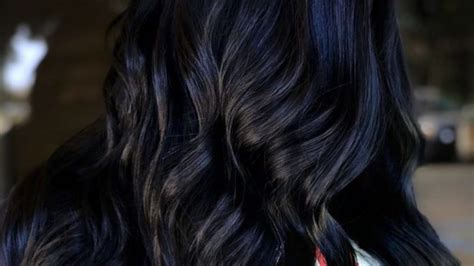What Is the Blackest Hair Color?
The blackest hair color is a natural or artificial shade that is devoid of any visible brown or red tones. It is the result of a high concentration of melanin, the pigment responsible for hair color. The darkest natural hair color is often referred to as “jet black” or “blue-black.”

Natural Black Hair Color
Natural black hair is the most common hair color worldwide, with approximately 80% of the global population possessing this shade. It is typically found in individuals of African, East Asian, and Native American descent.
Artificial Black Hair Color
Artificial black hair color is achieved through the use of hair dyes. Permanent hair dyes contain ammonia, which lifts the hair’s cuticle to allow the dye to penetrate the shaft. Semi-permanent and temporary hair dyes, on the other hand, do not contain ammonia and simply coat the hair’s surface.
Measuring Blackness
The blackness of hair color can be measured using a spectrophotometer, which measures the amount of light absorbed and reflected by the hair. The higher the absorption of light, the blacker the hair. The blackest hair color has an absorption value of 100%.
Health Benefits of Black Hair
Black hair is often associated with good health and vitality. Studies have shown that high levels of melanin in the hair are protective against sun damage, cancer, and other environmental hazards.
Cultural Significance of Black Hair
Black hair has played a significant role in various cultures throughout history. In ancient Egypt, black hair was considered a symbol of beauty and fertility. In many African and Caribbean cultures, black hair is seen as a source of pride and empowerment.
How to Get the Blackest Hair Color
Natural Methods
- Use coffee or tea rinses: Brewed coffee or tea contains tannins, which can darken the hair.
- Apply beetroot juice: Beetroot juice can temporarily darken the hair.
- Use henna: Henna is a natural dye that can add depth and darkness to the hair.
Artificial Methods
- Permanent hair dyes: Permanent hair dyes containing ammonia are the most effective way to achieve the blackest hair color.
- Semi-permanent hair dyes: Semi-permanent hair dyes do not contain ammonia and are less damaging to the hair but provide less intense results.
- Temporary hair dyes: Temporary hair dyes simply coat the hair’s surface and wash out after a few shampoos.
Common Mistakes to Avoid
- Over-processing the hair: Over-processing can lead to damage and breakage.
- Using the wrong developer: The developer strength should be appropriate for your hair type and texture.
- Applying too much dye: Too much dye can weigh down the hair and make it look flat.
Step-by-Step Approach to Achieving Blackest Hair Color
- Determine your natural hair color and the desired shade of black.
- Choose a hair dye that is specifically designed for your hair type and texture.
- Follow the manufacturer’s instructions for mixing and applying the dye.
- Process the hair for the recommended amount of time.
- Rinse the dye thoroughly and apply conditioner.
- Style your hair as desired.
Tables
1. Hair Color Absorption Values
| Hair Color | Absorption Value |
|---|---|
| Jet Black | 100% |
| Blue-Black | 95-99% |
| Dark Brown | 80-94% |
| Medium Brown | 65-79% |
| Light Brown | 50-64% |
2. Recommended Developer Strengths for Different Hair Types
| Hair Type | Developer Strength |
|---|---|
| Fine Hair | 10-20 volume |
| Medium Hair | 20-30 volume |
| Coarse Hair | 30-40 volume |
3. Hair Dye Brands for Blackest Hair Color
| Brand | Product |
|---|---|
| L’Oréal Paris | Excellence Crème in Black |
| Garnier Nutrisse | Ultra Color in Ebony |
| Clairol Natural Instincts | Extreme Black |
| Revlon ColorSilk | Permanent Color in Black Cherry |
| Schwarzkopf Keratin Color | Ultimate Black |
4. Natural Hair Darkening Treatments
| Treatment | Effect |
|---|---|
| Coffee Rinse | Temporary darkening |
| Tea Rinse | Slight darkening |
| Beetroot Juice | Temporary darkening |
| Henna | Gradual darkening |
| Indigo Powder | Blue-black darkening |
